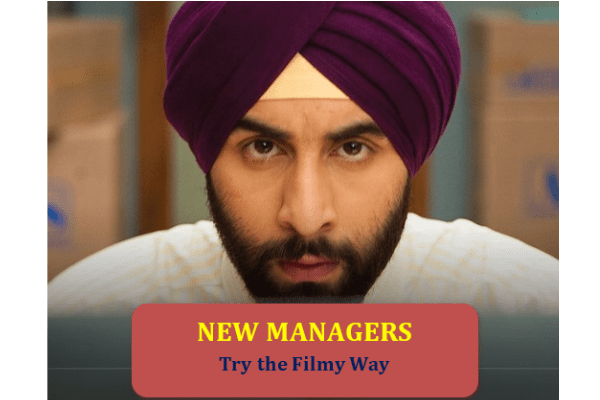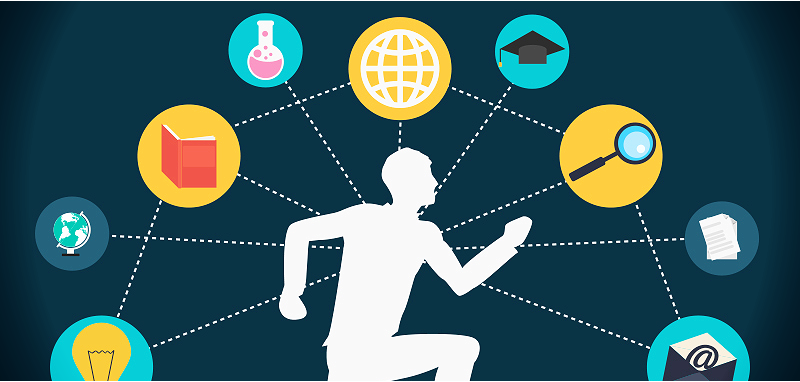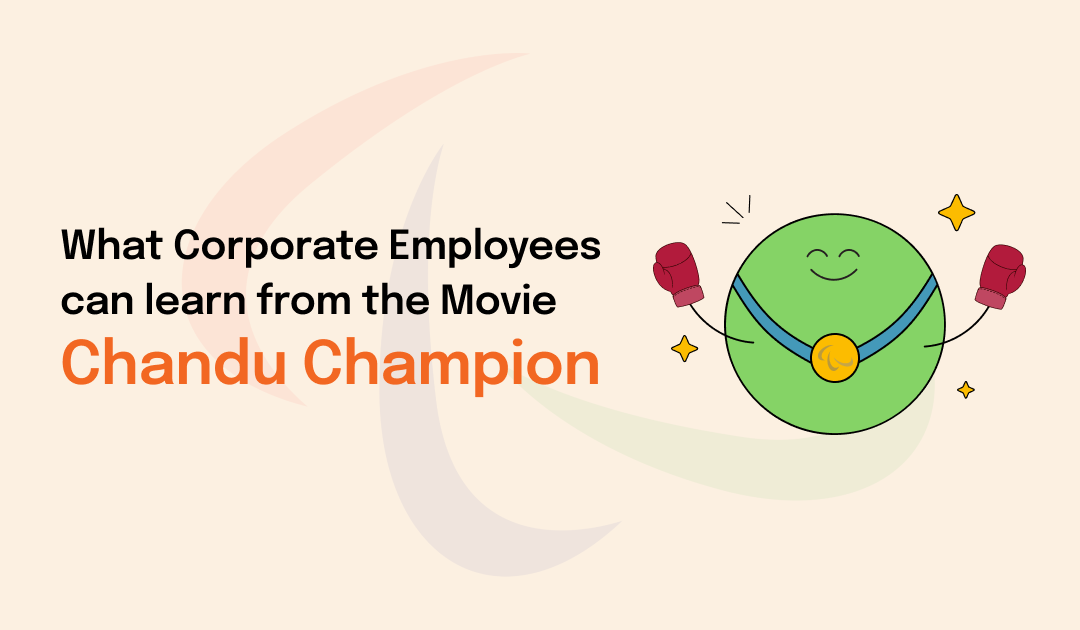Quite often we hear senior managers, corporate trainers, and business leaders search for the right content for training their new managers. Try googling “new managers training PPT” and you will get thousands of them. But power point presentations are just not enough. To train your new managers, you also need audio-visual aids to make the learning stick. And what can be better than movie clippings that deliver powerful message. Movie clippings bring together emotions, characters, and a story that is sure to make a huge impact.
We’ve often found that movies can be incredible mirrors for workplace dynamics. Whether it’s leadership under pressure, strategic decision-making, or the value of communication, films give us dramatic, relatable, and sometimes exaggerated views of the things we deal with in the corporate world.
In our experience, discussing movie scenes in leadership development programs can spark powerful reflections. Stories stick, and characters often model the very behaviours we aim to cultivate in our workplaces.
So, here are some memorable lessons from both classic and recent films that have inspired us — and continue to find their way into our workshops and conversations with leaders, managers, and teams.
1. Oppenheimer (2023)
Table of Contents
Scene: J. Robert Oppenheimer assembling a team of the brightest minds in physics to develop the atomic bomb during WWII.
Lesson: The power and peril of purpose-driven leadership.
Oppenheimer is portrayed as a visionary who inspires loyalty, but also someone who wrestles with ethical consequences. In our leadership workshops, we often ask: “How often do we reflect on the impact of our goals?” Purpose drives performance, but clarity and ethics must walk alongside.
Corporate takeaway: Encourage leaders to align teams around meaningful goals — but ensure values and consequences are also discussed.
2. Barbie (2023)
Scene: Barbie discovering the “real world” and confronting her own relevance.
Lesson: Reinvention and the importance of psychological flexibility.
We’ve noticed how many professionals (especially post-pandemic) are confronting questions of identity and value. Barbie’s journey from perfection to purpose resonates deeply.
Corporate takeaway: Help individuals redefine success in evolving contexts. Build workplaces where reinvention is seen as a strength.
3. The Intern (2015)
Scene: Robert De Niro’s character joining a fast-growing startup as a senior intern.
Lesson: Cross-generational collaboration and humility.
In our intergenerational team interventions, this movie is a favourite reference. The Intern reminds us that experience is timeless — and mutual respect opens doors to mentorship in both directions.
Corporate takeaway: Create environments where diverse experiences are leveraged. Age diversity can be a competitive advantage.
4. Ford v Ferrari (2019)
Scene: The clash between innovation (Carroll Shelby and Ken Miles) and corporate bureaucracy (Ford Motor Company).
Lesson: Championing innovation in structured systems.
We often bring this up in sessions with product or R&D teams. Innovation requires courage and clarity — but also needs to be translated into business language that decision-makers understand.
Corporate takeaway: Empower innovators with the tools and language to bridge creativity and business strategy.
5. 12th Fail (2023)
Scene: Manoj struggling through multiple failures while preparing for the UPSC exam, facing systemic challenges and self-doubt.
Lesson: Resilience and growth mindset.
This Hindi film hits home with teams facing setbacks. In our resilience-building sessions, we often refer to this movie to illustrate how grit, community support, and mindset shift can make a difference.
Corporate takeaway: Normalize failure. Reinforce learning over perfection.
6. Hidden Figures (2016)
Scene: Katherine Johnson calculating trajectories for NASA launches.
Lesson: Overcoming bias, being seen, and owning your space.
This film comes up in many of our inclusion and diversity sessions. It reminds teams of the power of untapped talent and the cost of exclusion.
Corporate takeaway: Make space for every voice. Create systems that enable visibility and belonging.
7. Moneyball (2011)
Scene: Billy Beane challenging baseball norms by relying on data and statistics rather than conventional scouting.
Lesson: Challenging legacy thinking through data-led decision making.
In our experience, change initiatives often stumble not because of bad ideas, but because of resistance to new metrics.
Corporate takeaway: Champion data fluency. Reevaluate how success is measured.
8. Rocketry: The Nambi Effect (2022)
Scene: Nambi Narayanan battling false accusations while staying focused on his long-term vision for India’s space program.
Lesson: Integrity in leadership and long-term vision despite adversity.
When we talk about values-driven leadership, this movie is a powerful example. It illustrates the loneliness that sometimes comes with doing the right thing.
Corporate takeaway: Encourage leaders to lead with integrity, even when it’s hard.
9. The Martian (2015)
Scene: Mark Watney surviving on Mars using science, humour, and sheer willpower.
Lesson: Creative problem solving in high-pressure, isolated environments.
As remote work became mainstream, this movie took on new meaning. We’ve found it resonates deeply with employees learning to stay self-motivated and resourceful in isolation.
Corporate takeaway: Equip teams with autonomy and the tools to thrive independently.
10. Chak De! India (2007)
Scene: Coach Kabir Khan uniting a diverse women’s hockey team to play as one.
Lesson: Team alignment, breaking silos, and leading with belief.
This one continues to be a staple in our team-building workshops. The transition from dysfunction to cohesion is a story we revisit often.
Corporate takeaway: Diverse teams need shared goals and a leader who believes in them.
11. Facing the Giants
Scene: Coach Taylor asks Brock to get blindfolded and stretch beyond his limit. At the onset, Brock started at a slow pace, but later when he loses all his strength and was about to give up, the coach pushed him even harder. The coach made him do the death crawl till the end of a hundred yards successfully, which surprises the entire team – nothing is impossible.
Corporate takeaway: Challenges make you discover things about yourself that you never really knew existed.
13. Rocket Singh: Salesman of the Year
Scene: Harpreet Singh (Rocket Singh) gives a powerful message that to succeed in business, you need to develop your emotional intelligence. Yes, you need to focus on numbers but what drives business is people.
Corporate takeaway: Business is beyond numbers, beyond fancy slide decks and beyond business jargon. You don’t build a business; you build good relationships with people and then people build the business.
14. Bhaag Milkha Bhaag
Scene: Milkha Singh sets his goal for the next race and writes it on a piece of paper. He visualizes his ultimate aim and then begins the preparation. The video shows how, when you know your goal clearly, you can unleash an unlimited amount of energy. When you work hard anything is possible.
Corporate takeaway: Set a goal so big that you can’t achieve it until you grow into the person who can.
15. The Pursuit of Happyness
Scene: The conversation between a father and son is in fact a mantra for success in business/professional life. What really stands out in the entire conversation is that if you have a dream, you need to protect it. Don’t let anyone tell you it can’t be done, for if there is a will there is a way.
Corporate takeaway: Don’t let what you can’t do interfere with what you can do.
Bonus Mentions
- The Social Network (2010): Start-up culture, ambition, and relationship fallout.
- The Pursuit of Happyness (2006): Perseverance through personal and professional hardship.
- Whiplash (2014): Leadership vs. toxicity—pushing for excellence or crossing boundaries?
- Inside Out (2015): Emotional intelligence and navigating change.
Why Movies Work for Learning & Development
In our workshops, we’ve seen how referencing scenes from films helps participants:
- Process abstract concepts through vivid stories
- Connect emotionally with learning objectives
- Retain insights more effectively
When used intentionally, movies are more than entertainment. They’re case studies in human behaviour, team dynamics, and strategic thinking.
Final Thoughts
As L&D professionals, HR leaders, or people managers, we’re always looking for new ways to engage, inspire, and create reflection. Cinema offers us an ever-growing library of stories that can help.
Whether you’re planning a team offsite, a leadership summit, or just looking to bring something fresh to your next training session — consider bringing in a few movie moments.
Sometimes, a scene can say what a slide deck never can.
We’d love to hear what films have inspired leadership lessons in your journey. Let’s keep learning, one story at a time.










